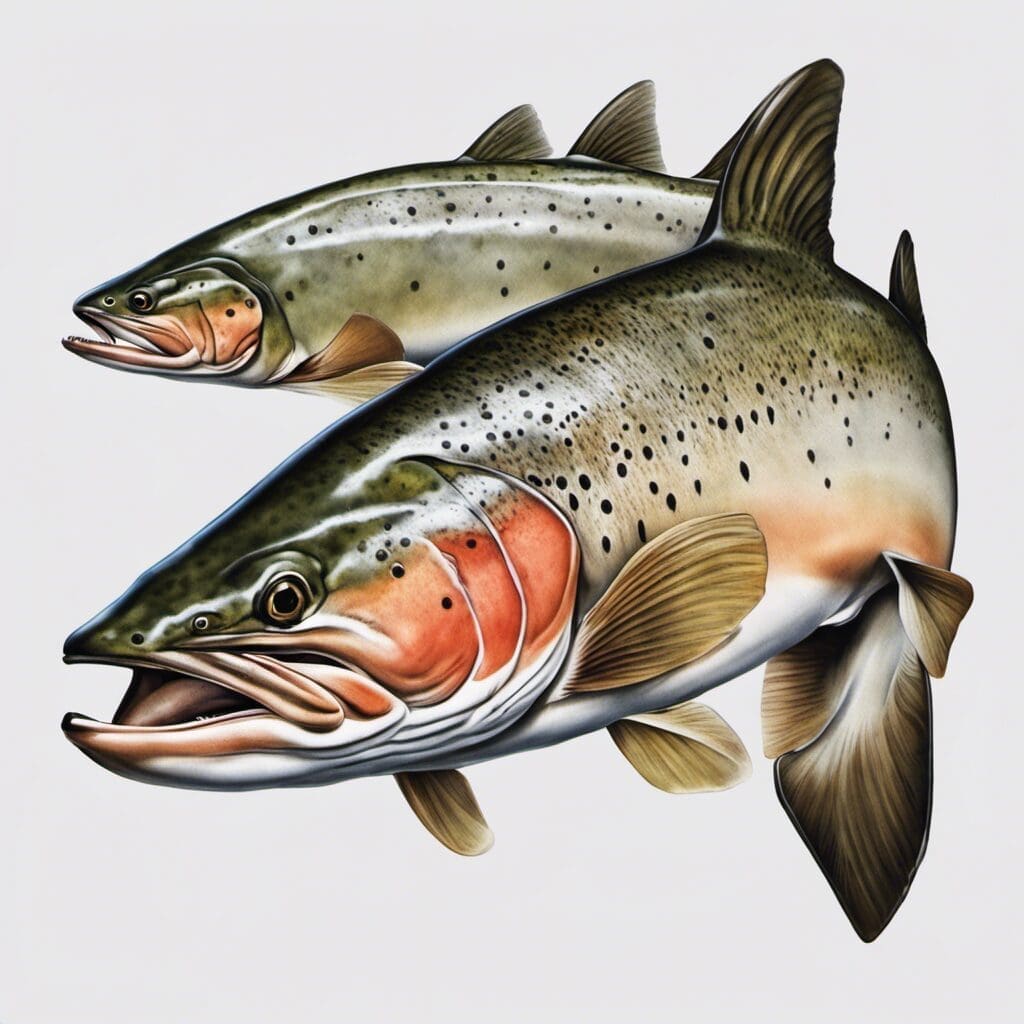Introduction
Species Name and Family Name
The Steelhead Trout, also scientifically referred to as Oncorhynchus mykiss, is a distinctive member of the Salmonidae family. This species is renowned for its migratory behavior and is a favorite among anglers due to its highly spirited fighting when caught.
Conservation Status
Current Status
The Steelhead Trout is currently listed as “threatened” under the US Endangered Species Act of the National Oceanic and Atmospheric Administration (NOAA) across most of its United States range, and “endangered” in Southern California.
Conservation efforts
Protection mandates and rehabilitation of habitats are prevalent conservation strategies currently in action to preserve and revive Steelhead Trout populations. Efforts include improving streamflow management, reducing water pollution, and facilitating fish passage at stream barriers.
Statistics
| Statistic | Value |
| ————- |:————-:|
| Average Length | 24 inches |
| Length Range | 15-45 inches |
| Average Weight | 8 lbs |
| Weight Range | 2-35 lbs |
| Average Lifespan | 5-11 years |
Distribution
Regions/Countries
Steelhead Trout inhabit the coastal waters of North America’s Pacific Ocean, specifically around Alaska and the Bering Sea. They also extensively populate rivers of the US Pacific Northwest, and Western Canada.
Migration Patterns
Displaying an anadromous lifestyle, Steelhead Trout migrate from sea to freshwater sources for spawning, often covering substantial distances for reaching native streams.
Habitats
Steelhead Trout are versatile, inhabiting both freshwater rivers and oceanic environments. They favor water depths that provide security, such as deep pools or undercut streambanks. They can cope with a wide range of temperatures but typically prefer cooler waters between 45-65°F.
When and Where to See
Seasonal Patterns
In the wild, Steelhead Trout can be spotted generally during fall, winter, and early spring when they migrate upstream for spawning purposes.
Time of Day
Like many fish species, they exhibit dawn and dusk feeding activities, making these the best times for observation.
Best Fishing Locations
Prominent fishing locations include:
1. Skeena River, British Columbia
2. Dean River, British Columbia
3. Kenai River, Alaska
4. Deschutes River, Oregon
5. Snake River, Idaho
6. Babine River, British Columbia
7. Rogue River, Oregon
8. Situk River, Alaska
9. Clearwater River, Idaho
10. Umpqua River, Oregon
How to Catch
Preferred Bait or Lures
Fly fishing is popular for Steelhead Trout, with brightly-colored flies being effective. Beads, jigs, and spinners also prove successful.
Fishing Techniques
Fly fishing, casting with lures, and ‘bobber-dogging’ (a strategy which blends float fishing and drift fishing) are well-adopted techniques for this species.
Identification Guide
Steelheads are known for their sleek profile and silvery coloration. They possess a dark olive or steel-blue dorsum with a pearl-white ventral side. Their round spots extend from the back and lateral line to the entire tail.
Culinary
How to Cook and Taste Profile
Known for their tender, mild-flavored, and pinkish meat, Steelhead Trout can be grilled, smoked, steamed, or baked. Their taste is often compared to that of Salmon.
Additional Information
Behavior
Feeding largely on aquatic insects, small fish, and amphipods, Steelhead are active predators.
Predators and Threats
Common predators include seals, sea lions, and large fish species. Human-induced threats include habitat loss, overfishing, and pollution.
Cultural/ Historical Significance
These fish symbolize endurance and determination in various Native American folklore due to their migratory behavior.
References and Further Reading
For more detailed information, refer to research studies and publications available on governmental sites such as the National Oceanic and Atmospheric Administration (NOAA) Fisheries and U.S. Fish and Wildlife Services

